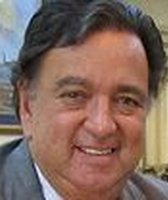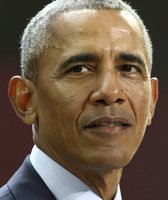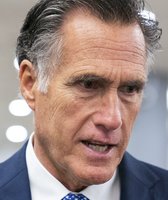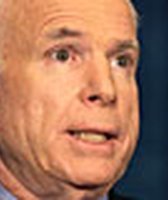Stand up for the facts!
Our only agenda is to publish the truth so you can be an informed participant in democracy.
We need your help.
I would like to contribute
SUMMARY: Fred Thompson suggests that gun ownership reduces crime, but his commentary is backed by little more than disputed NRA statistics.
The debate over the possible relationship between guns and crime rates has kept researchers in business for decades. In a posting on his Web site on Aug. 21, Thompson provided his take on the controversy with a commentary about New York City, and its efforts to sue gunmakers. Included in the commentary was a shot at Rudy Giuliani, who backed the city's efforts.
"Ironically, all of this comes at a time of historically low violent crime rates and historically high gun ownership rates nationally," Thompson wrote. He went on to cite National Rifle Association figures.
Thompson's exploratory committee declined to comment or elaborate on the statistics.
Thompson may have spoken with authority as Manhattan District Attorney Arthur Branch on Law and Order, but here, his statistics fall short in several ways.
Sign up for PolitiFact texts
First, gun ownership rates are extremely difficult to calculate. The NRA used 8-year-old federal estimates and then used gun purchase figures to assume there are additional guns in the United States. However, a spokeswoman for the Bureau of Alcohol, Tobacco and Firearms said it is impossible to estimate how gun ownership has grown because there is no national gun registry.
Violent crime had been at historic lows, dropping between 1993 and 2004. However, the FBI reports that the estimated rate of violent crime increased 2.3 percent in 2005 and 1.3 percent in 2006. Advocates on both sides of the issue have used the statistics to argue their own cases.
The result? The Congressional Research Service reported in May 2005 that, "According to a recent study...none of the existing sources of statistics provide either comprehensive, timely or accurate data with which to definitively assess whether there is a causal connection between firearms and violence."
Academics have been studying the issue for years. "As the probability that someone is able to defend themselves increases, the greater the deterrent [effect] increases," said John Lott, a senior research scholar at the University of Maryland and author of the book More Guns Less Crime. He said the longer that "right-to-carry" laws are in effect, the higher the crime rate reduction.
Not so, said James Jacobs, director of the Center for Research in Crime and Justice at the New York University Law School. Lott's claims cannot be sustained, he said, contending that there were not enough homicides in each county Lott studied for him to make his conclusion.
"The data just are not there," he said.
If the picture were not muddled enough, Philip Cook, associate director of the Terry Sanford Institute of Public Policy at Duke University, said guns can boost the rate of violent crimes. "Gun ownership has an influence on the intensity of a crime -- the likelihood that someone will die," he said. "The murder rate is sensitive to gun ownership."
However, he believes the overall crime rate is not affected by guns. "I think the crime rate is independent of the gun ownership rate."
Thompson's claim that gun ownership rates have increased is unproven. Crime rates have dropped until recently. And the as-yet-unproven relationship between the two will remain fodder for researchers for decades to come.
Our Sources
2006 Preliminary Annual Uniform Crime Report, FBI
Bureau of Justice Firearm and Crime Statistics
Congressional Research Service report on gun legislation in the 109th Congress





































